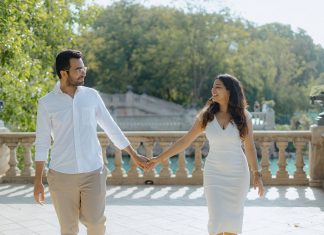Akingdom between the Baltic and North seas for more than 1,000 years, Denmark and its many ports are worth a call. The Jutland peninsula divides the Skagerrak and Kattegat straits; numerous islands make up the rest of the country.
Points ofInterest
Area:16,631 square miles (half the size of Maine); this excludes autonomous Greenland, equal to Alaska and Texas combined.Population:5,100,000 (Copenhagen, 1,360,000; Århus, 198,000).Language:Danish.
Highlights
Copenhagenis on the island of Sjælland (Sealand). Its pleasures include strolling along the mile-long Strøget pedestrian boulevard and passing the time at a comfortable cafe. Visit the National Museum, newly renovated and expanded; Christianborg Castle, with its many lavish rooms, home of the Danish Parliament and the Supreme Court; or Rosenborg Palace, where a dazzling collection of crown jewels and royal regalia is on display. On the waterfront, the famous Little Mermaid offers a serene welcome.
Odense, native city of Hans Christian Andersen, is on the garden island of Fyn. Andersen’s house is a museum containing letters, manuscripts and possessions. A boat trip on the Odense river takes you to Fyn Village, an open-air museum.
Århus, the second-largest city, dates to the Viking era. The Old Town is an open-air museum with 60 original, furnished houses and other buildings dating to the 17th and 18th centuries. The Prehistoric Museum, located in a 200-year-old manor house, traces Danish life back 2,000 years.
Aalborg, in northern Jutland, has been named Europe’s cleanest city. It also has more than 200 pubs and restaurants, and is situated less than an hour’s drive from some of the finest beaches on the North Sea coast. There are Viking settlements at nearby Lindholm Høje.
Roskilde, 20 miles west of Copenhagen, was the royal residence in the 10th century. The Roskilde Domkirke (cathedral), built in 1170 by Bishop Absalon on the site of a church erected 200 years earlier by Harald Bluetooth, has been named a UNESCO World Heritage site.
The Viking Ship Museum contains five vessels which were purposely sunk in the fjord 1,000 years ago to block enemy ships.
Attractions
Amalienborg Museum, Copenhagen. Some of the official and private rooms in Amalienborg Palace, the residence of Queen Margrethe II, are now permanently open to the public. The rooms, restored to the period of 1863-1947, belonged to members of the reigning Glucksborg family, who first ascended to the throne in 1863.
National Museum, Copenhagen. A new wing accommodates the outstanding collection of 20th-century art. Exhibits trace Denmark’s development from prehistoric times to about 1680. Danish paintings and sculptures, and collections of European paintings are displayed. The museum also contains a restaurant, a cinema and a shop.
Ny Carlsberg Glyptotek, Copenhagen. A new wing houses the museum’s extraordinary Impressionist collection, which includes 35 Gauguins. Greek, Etruscan and Roman art, as well as 19th-century French and Danish works are exhibited. Features a splendid winter garden.
Tivoli Gardens, Copenhagen. One of the world’s best-known amusement parks. Some of Copenhagen’s finest musicians received their training in the Guard, which is comprised of 110 boys, ages 9 to 16.
Louisiana Museum of Modern Art, Humblebæk. The most-visited museum in Denmark, it features works by Calder, Warhol and other experimental artists.
Frederiksborg Castle, Hillerød. A national history museum in an imposing Renaissance building surrounded by a moat. A magnificent Baroque garden, complete with waterfalls and basins, has been re-created as it was in 1721. Summer concerts are performed in the chapel.
Karen Blixen Home, Rungstedlund. The home of the author ofOut of Africa– whose pen name was Isak Dinesen — has changed little since her death 35 years ago. Featured are the memorabilia she collected over two decades in Africa.
Legoland Park, Billund. Large-size replicas of such American attractions as the Statue of Liberty, Mount Rushmore and the Capitol, all built with Lego bricks.












